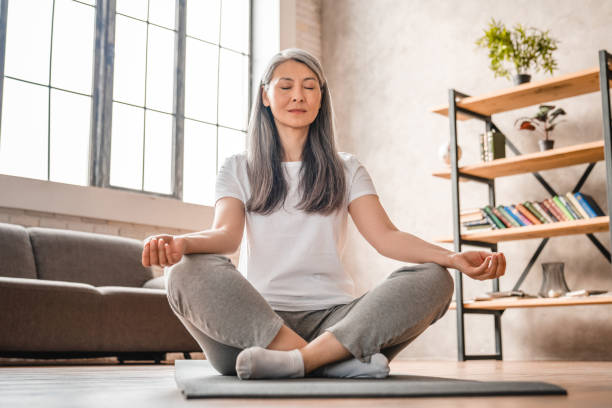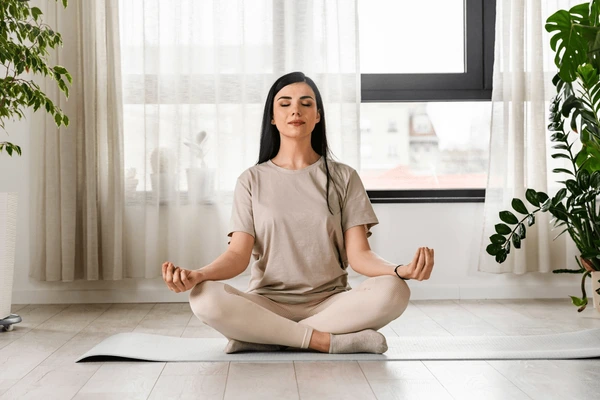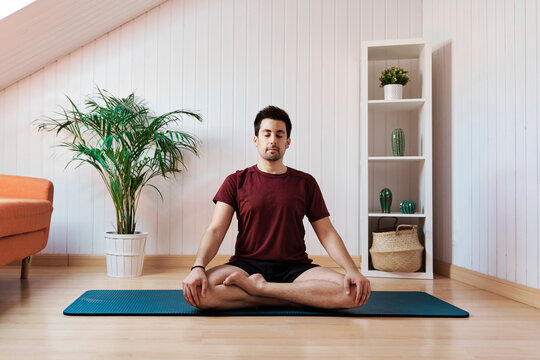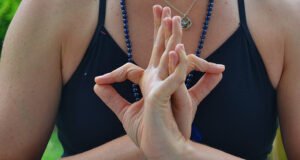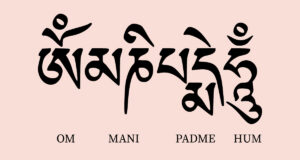Meditation is more than just sitting quietly; it is a structured meditation practice & setup that brings clarity, peace, and mindfulness into daily life. Whether you are a beginner starting with just 10 minutes a day or an advanced practitioner exploring deep meditation, creating the right setup is essential for consistency and effectiveness. This article explores different aspects of meditation practice & setup.
Types Of Meditations In Meditation Practice & Setup:
Meditation practice & setup become more effective when supported by the right setup. A peaceful space, proper posture, and consistent routine help create the ideal environment for mindfulness and inner calm. From choosing a meditation position to preparing a distraction-free zone, each element plays a role in deepening focus and relaxation. With the right meditation practice & setup, meditation transforms into a nourishing daily ritual.
10-Minute Meditation:
Many people believe meditation requires long sessions to be effective. In reality, even 10 minutes of meditation can bring remarkable benefits when practiced consistently.
Benefits of 10-Minute Meditation:
- Reduces stress: Short sessions lower cortisol levels and calm the nervous system.
- Enhances focus: A brief pause helps reset the mind for better concentration.
- Builds habit: Small, manageable sessions are easier to maintain daily.
- Boosts mood: Increases dopamine and serotonin levels, improving emotional balance.
How to Practice a 10-Minute Session:
- Find a quiet spot – Sit comfortably on a chair, cushion, or mat.
- Set a timer – Knowing time is managed allows you to relax fully.
- Focus on breathing – Observe the inhale and exhale without judgment.
- Gently return attention – When distracted, bring awareness back to the breath.
- End with gratitude – Acknowledge the time spent for self-care.
Morning Meditation:
The morning is considered the best time for meditation in many traditions, including Vedic and Buddhist practices. The mind is naturally calm upon waking, and the environment is generally quieter.
Benefits of Morning Meditation:
- Sets a positive tone: Begins the day with clarity and peace.
- Improves productivity: Enhances focus and decision-making.
- Strengthens discipline: Builds consistency in practice.
- Balances emotions: Prevents stress and anxiety from accumulating.
Morning Meditation Techniques:
- Mindfulness meditation: Observing thoughts and sensations without reaction.
- Mantra meditation: Repeating a word or phrase such as Om or affirmations.
- Visualization: Imagining a positive outcome or peaceful setting for the day.
- Breathing exercises (Pranayama): Techniques like Anulom Vilom or deep diaphragmatic breathing.
Deep Meditation:
Deep meditation goes beyond simple relaxation to reach states of profound stillness and awareness. This level of meditation requires regular practice, patience, and the right conditions.
Benefits of Deep Meditation
- Profound stress release.
- Enhanced creativity and intuition.
- Emotional healing and resilience.
- Spiritual growth and self-realization.
Meditation Positions in Meditation Practice & Setup:
The position you meditate in greatly influences your comfort and focus. While traditional postures are cross-legged, the best position is one that allows both stability and relaxation.
From the ancient lotus position to modern chair-supported meditation, there are many ways to sit, kneel, or even lie down in meditation. This article provides a comprehensive guide to meditation positions, their history, variations, benefits, and practical tips to help you find the right posture for your meditation practice & setup.
Easy Pose or Sukhasana:
Easy Pose is the most accessible meditation posture, especially for beginners. You sit cross-legged on the floor or a cushion, keeping your spine straight and shoulders relaxed. Hands usually rest on the knees or lap. This position promotes calmness, stability, and comfort, making it suitable for short to medium meditation sessions. While it doesn’t require much flexibility, using a cushion under the hips can improve posture and reduce strain on the knees and lower back.
Half Lotus or Ardha Padmasana:
Half Lotus is a traditional yoga meditation posture offering more stability than Easy Pose. One foot rests on the opposite thigh, while the other remains tucked beneath the knee. It helps align the spine, keeps the body steady, and encourages deeper concentration. This position improves hip flexibility and supports energy flow during longer sessions. However, it requires practice and may be slightly uncomfortable at first, so beginners are advised to ease into it gradually with props if necessary.
Full Lotus or Padmasana:
Full Lotus is one of the most iconic meditation positions, often seen in statues of Buddha and yogis. In this pose, each foot rests on the opposite thigh, with soles facing upward. It creates a very stable base, ideal for deep meditation, and is believed to balance energy and promote inner stillness. While it offers powerful benefits, it demands high flexibility in hips, knees, and ankles. Beginners should not force this position and can work toward it gradually with practice.
Reclined Meditation or Shavasana:
Reclined meditation, or Shavasana, is practiced lying flat on the back with arms relaxed at the sides and palms facing upward. Legs are slightly apart, and eyes closed. This posture is excellent for guided meditations, body scans, and yoga nidra, helping the body release tension and fully relax. However, it may easily lead to drowsiness, so it is best suited for relaxation rather than alert, focused practices. Shavasana is particularly beneficial for stress relief and sleep preparation.
Vajrasana or Thunderbolt Pose:
Vajrasana is a kneeling posture where the practitioner sits on the heels with toes pointing backward. Unlike other meditation poses, it can be practiced even after meals, as it is believed to aid digestion. It strengthens the lower back and legs while supporting deep breathing. Vajrasana is often used in pranayama (breathing exercises) and meditation. However, beginners may experience discomfort in the knees and ankles, so using a cushion between the thighs and calves can help with support.
Siddhasana or Accomplished Pose:
Siddhasana is a powerful yogic posture often considered ideal for spiritual practices. In this pose, one heel is pressed against the perineum, while the other rests in front, with both feet close to the pelvis. The spine is straight, hands rest on the knees, and gaze is steady. Siddhasana is said to awaken energy channels and balance the mind-body connection. Though highly beneficial, it requires hip and groin flexibility, making it more suited for experienced practitioners than beginners.
Ardha Vajrasana or Half Thunderbolt:
Ardha Vajrasana is a variation of Vajrasana where the practitioner kneels with one leg bent underneath while the other is extended forward. This posture provides greater comfort than full Vajrasana while retaining its grounding and stabilizing qualities. It relieves pressure on the knees and ankles while keeping the spine tall and straight. Ardha Vajrasana is particularly useful for those who wish to practice kneeling meditation but struggle with flexibility or joint pain, offering a balanced alternative posture.
Meditation Space:
A meditation space is more than just a physical spot in your home; it is a sanctuary where you can retreat, disconnect from external noise, and reconnect with your inner self. Whether large or small, creating a dedicated space helps condition your mind and body to enter a state of calmness and focus whenever you step into it. Designing such a space thoughtfully can significantly enhance the quality of your meditation practice & setup.
Choosing the Right Location:
The first step is selecting a place that feels quiet and comfortable. It doesn’t have to be an entire room; even a corner of your bedroom or living room can serve as your meditation zone. Look for an area with minimal distractions, good ventilation, and natural light if possible. A space that feels open and clutter-free will encourage a sense of relaxation and mindfulness.
Decluttering and Simplicity:
Simplicity is key in a meditation space. Remove unnecessary items, as clutter can create mental restlessness. A clean and organized environment fosters inner clarity. The goal is to design a setting that helps you feel light and peaceful rather than distracted.
Essential Elements of a Meditation Space:
- Seating: A meditation cushion, mat, stool, or chair provides comfort and stability. Choose based on your preferred meditation posture.
- Lighting: Soft, natural light is ideal. If meditating at night, consider warm lamps or candles to create a calming glow.
- Decor: Minimalist yet meaningful decorations, such as a Buddha statue, spiritual symbols, or a small piece of meditation art can inspire focus.
- Nature: Incorporating plants, flowers, or natural elements like stones and crystals adds freshness and grounding energy to the space.
Creating a Sensory Experience:
Engaging the senses helps deepen meditation. You can use incense, essential oils, or a diffuser to create a soothing fragrance. Sound can also play a role—some people prefer silence, while others may enjoy soft music, chanting, or meditation bells. The sense of touch matters too; comfortable cushions, mats, or blankets can prevent discomfort during longer sessions.
Personalization and Sacredness:
Your meditation space should reflect your personality and spiritual journey. For some, this may mean placing a prayer wheel, mala beads, or meaningful artwork. For others, it could simply be a candle or a journal to record reflections. What matters most is that the space feels sacred and invites you to pause and reconnect.
Maintaining the Space:
Consistency is important. Treat your meditation corner as a sacred spot, clean it regularly, refresh flowers or incense, and keep it organized. This respect for the space strengthens your commitment to the meditation practice & setup and makes it a welcoming retreat every day.
Ways to Avoid Distractions During Meditation Practice & Setup:
Meditation is often described as the art of focusing the mind, but one of the greatest challenges practitioners face is distraction. Thoughts wander, noises interrupt, and physical discomfort pulls attention away from the present moment. While distractions are natural, learning to manage them is essential for building a deeper, more fulfilling meditation practice & setup. Below are some effective ways to minimize and overcome distractions during meditation.
Create a Dedicated Meditation Space:
Having a consistent place for meditation conditions your mind to settle quickly. A calm and clutter-free space reduces external triggers that may disrupt focus. Whether it is a small corner of your room or a specially designed meditation area, ensure it is quiet, clean, and comfortable. This environment acts as a signal to your brain that it’s time to relax and focus inward.
Set a Regular Schedule:
Meditating at the same time each day helps establish a routine and reduces resistance. Early morning or late evening is often ideal since the environment is quieter and the mind is less preoccupied with daily responsibilities. A fixed schedule also lowers the chance of external distractions, like phone calls or household noise, interfering with your meditation practice & setup.
Limit External Noise:
Complete silence may not always be possible, but minimizing noise can make meditation easier. Choose a quiet room, close doors and windows, and inform family members to avoid interruptions. If unavoidable, consider using noise-cancelling headphones or listening to soft background music, nature sounds, or guided meditations that mask disruptive noises.
Manage Digital Distractions:
Technology is one of the biggest culprits of distraction. Turn off phone notifications, place devices on silent, or keep them in another room. Even the thought of incoming messages can disturb concentration. If using meditation apps, set them up before beginning so you won’t need to interact with your device mid-practice.
Address Physical Comfort:
Physical discomfort is a common distraction. Choosing the right meditation posture is essential—whether it’s sitting cross-legged on a cushion, kneeling on a stool, or using a chair. Keep the spine upright but relaxed, and use props like mats or blankets for support. Practicing a few stretches before meditation can also prevent stiffness and restlessness.
Use Anchors for Attention:
When the mind wanders, having a focus point helps. Breath awareness is the most common anchor—gently observing inhalations and exhalations without controlling them. Other anchors include repeating a mantra, visualizing a symbol, or focusing on body sensations. Anchors act as steady reference points, making it easier to return to the present moment whenever distractions arise.
Practice Non-Resistance to Thoughts:
For beginners, the biggest frustration is the constant stream of thoughts. Instead of trying to block them, acknowledge them gently and return to your focus. Treat thoughts as passing clouds in the sky—temporary and harmless. This non-judgmental approach prevents frustration and trains the mind to let go of distractions naturally.
Start with Short Sessions:
Meditating for long periods can lead to restlessness, especially for beginners. Starting with 5–10 minutes reduces strain and makes it easier to stay focused. As concentration improves, the duration can gradually be extended. Short, consistent sessions are more effective than infrequent, long ones.
Incorporate Breath and Body Awareness:
Sometimes, bodily sensations like itching, stiffness, or fidgeting become distractions. Instead of reacting, practice mindful awareness of these sensations. A gentle body scan or focusing on rhythmic breathing can ground attention and prevent small discomforts from pulling you away from the meditation practice & setup.
Cultivate Patience and Acceptance:
Distractions are part of the meditation journey, not failures. Even experienced practitioners encounter wandering thoughts or external noise. The key is patience—gently guiding attention back without self-criticism. Over time, the mind becomes more disciplined, and distractions lose their power.
Conclusion:
Meditation is both simple and profound. The key to success lies in consistency, comfort, and the right setup. Starting with 10-minute sessions makes the practice approachable, while morning meditation sets the tone for the day. With dedication, practitioners can explore deep meditation for profound insight and healing.

